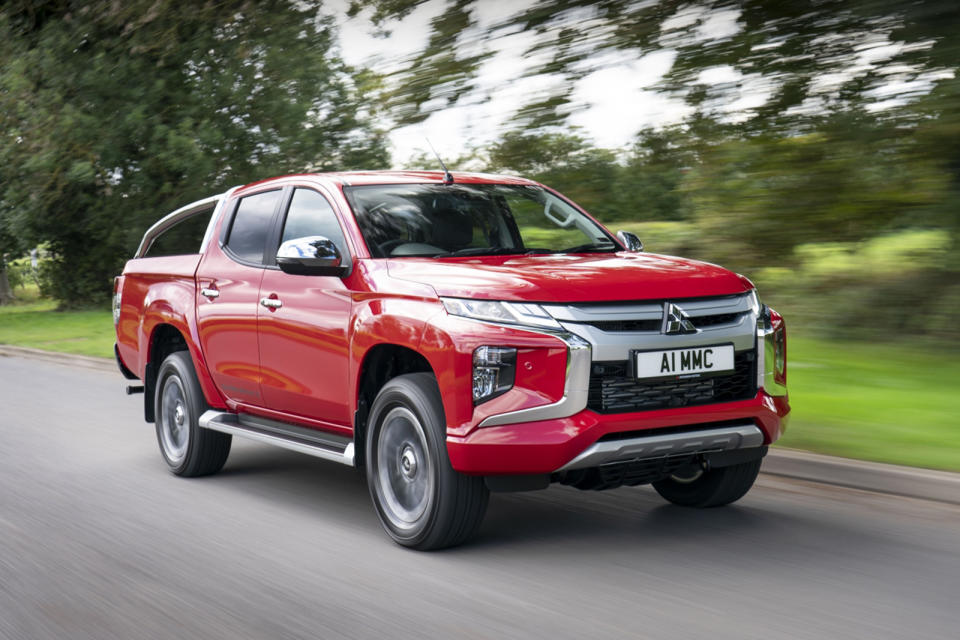Mitsubishi L200

Mitsubishi has been making hay with its Mitsubishi L200 pick-up truck since the end of the 1970s, and given the continued rise in popularity of four-door models like it, the sixth edition is very likely to be the most successful yet.
Mitsubishi has already sold 4.7 million copies of this Thai-built model around the world, and these days it accounts for one-third of all Mitsubishi sales in the UK. What's more, British buyers take a little less than half of all L200s sold in Europe, so the company’s Japanese bosses tend to take careful heed of local feedback – one reason why the model has been such an enduring success here.
The markedly more handsome sixth-edition L200 well reflects UK consumer comments: it's familiar in dimensions and mechanical elements but has been usefully improved in nearly every important aspect. The chassis frame and suspension (independent up front, leaf-sprung live axle behind) have had a rethink to give a better, quieter ride, and there’s a new all-alloy 2268cc, 148bhp diesel engine to cope with ever-tougher European clean air legislation.
The engine is actually a little smaller than the outgoing 2.4-litre unit (the previous model will continue selling in low-spec form for a couple of months) and sheds around 15bhp, although to maintain flexibility this peak is achieved about 500rpm lower in the rev range and maximum torque continues to be generous at 295lb ft.
How has Mitsubishi refreshed the L200's looks?
The new styling creates instant impression of extra presence – something the outgoing Mitsubishi L200 lacked in comparison with rivals such as the Ford Ranger and Mercedes-Benz X-Class. All models, even the entry-level, shorter-cab 4Life are well equipped to cope with a growing demand for gadgetry. There’s now a new top-spec model called Barbarian X — tested here — on sale at £32,200, which with the almost-as-plush Barbarian should attract around 40% of customers.
Overall styling has been changed to adopt the 'Dynamic Shield' style already seen on the Outlander (Mitsubishi’s other big UK success) and smaller Mitsubishi ASX SUVs. It’s far more modern and assertive; the clamshell bonnet has been raised 40mm to improve the view over the bonnet from the driver’s seat and the new LED headlights are mounted 100mm higher than before. The squared-off wheel arches and tougher-looking rear styling (with new LED tail-lights) also give a more contemporary look.
The interior is plusher and more car-like, with better-looking and more comfortable seats, a thicker-rimmed steering wheel, more fascia brightwork and screen-based gadgetry that's the equal of what you'd find in a well-equipped saloon. The Barbarian X gets bespoke 'six-pack' seat styling with sporting-type side bolsters, plus LED interior lighting. Mitsubishi is stressing the L200’s new comforts because its marketing people reckon buyers reluctant to embrace a new diesel SUV may find it easier to change to a civilised pick-up.
How does the L200 perform as a working vehicle?
Mitsubishi makes much of the Barbarian X’s breadth of performance, and the model certainly demonstrated this on test. It impressively tackled a difficult off-road course, making best use of its four-mode, electronically controlled four-wheel drive system (complete with hill descent control) and coping impressively with extremely slippery mud, even though its 18in alloy wheels were clad with normal-duty road tyres.
Furthermore, it easily towed 3.5-tonne loads (trailer and caravan towing are very important to L200 owners), and it copes much more easily with narrow and tight roads than its 5.3-metre overall length would lead you to expect. The accurate and nicely weighted hydraulic power steering helps with placing the vehicle in tight going, too.
The Barbarian cruises easily with faster traffic on motorways, which should sharpen its sales appeal to former SUV buyers. Wind noise is lower than in the previous model, while the tall, 60-series tyres (on 18in wheels) generate surprisingly little roar on coarse bitumen and help to reduce surface niggles. This is no luxury saloon, but it has a surprising feeling of tautness for a body-on-frame vehicle. The suspension feels reasonably supple (and the cart-spring rear quite well controlled) even in extremis. You’re aware of body roll when you drive near the limit, but cornering grip is sure and safely biased towards understeer on wet roads or loose surfaces.
In contrast to most rivals, the Barbarian X’s all-up weight is just below the 2050kg threshold for commercial vehicles that would otherwise limit its legal motorway limit to 60mph. Even so, it can handle a 1080kg payload, a little more than most rivals and safely above the the 1000kg minimum capability it needs to be registered as a low-tax business asset by the farmers and builders who will make up a big proportion of its owners.
How does the L200 compare to its direct rivals?
Double-cab pick-ups like the L200 have been improving in looks, capability and equipment over the past few years, and the competitor set has expanded, too, notably with the arrival of the plush and pricey Mercedes-Benz X-Class. Mitsubishi knew it needed to do something decisive, and its changes to the L200 look serious and successful. It's comparable with the best in the class again.
It also retains some advantages. L200s have always been impressively tough and reliable, and Mitsubishi's test routine admirably demonstrated this. The firm's dealers understand pick-up buyers and their unique demands and particularly value them.
In short, the sixth-generation L200, especially the plush Barbarian X, represents a strong bid by Mitsubishi to maintain a prominent place in the world of 'civilised' pick-ups, and it deserves to succeed.
]]>

 Yahoo Autos
Yahoo Autos 
